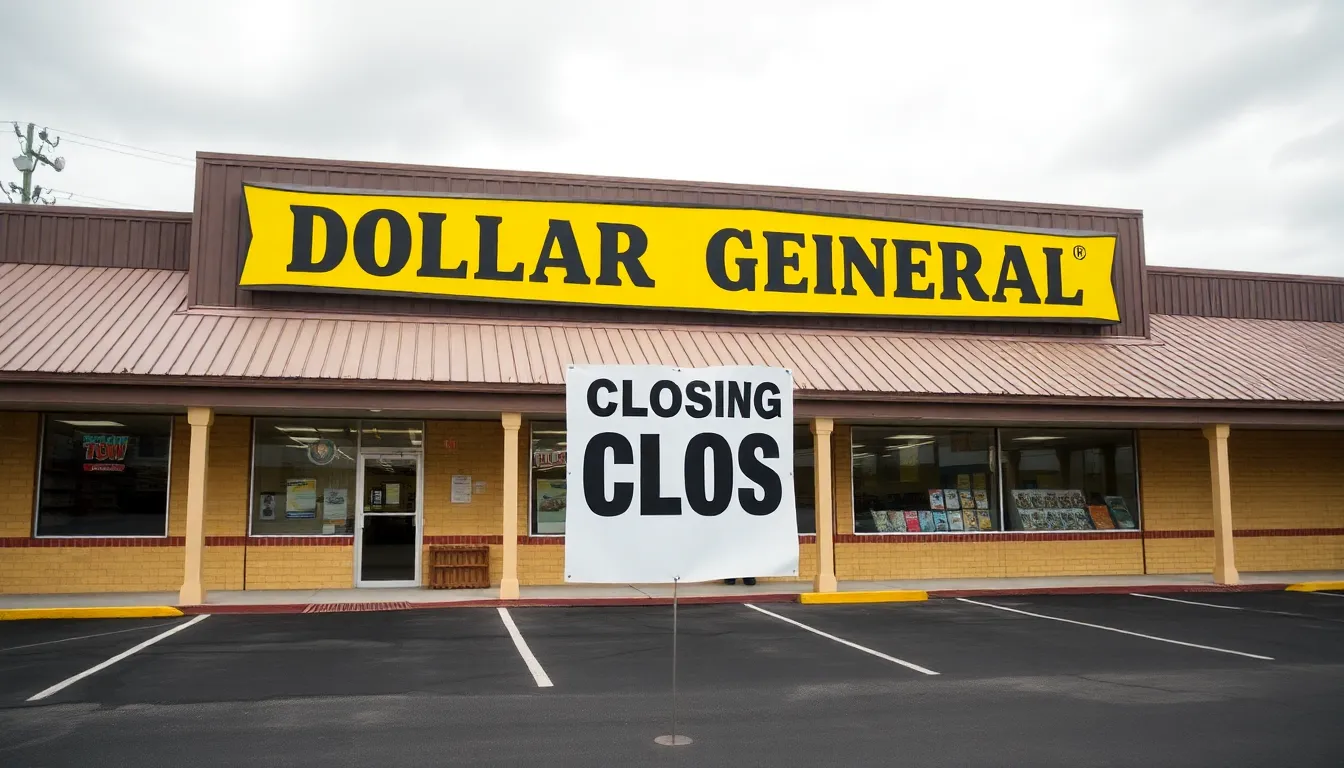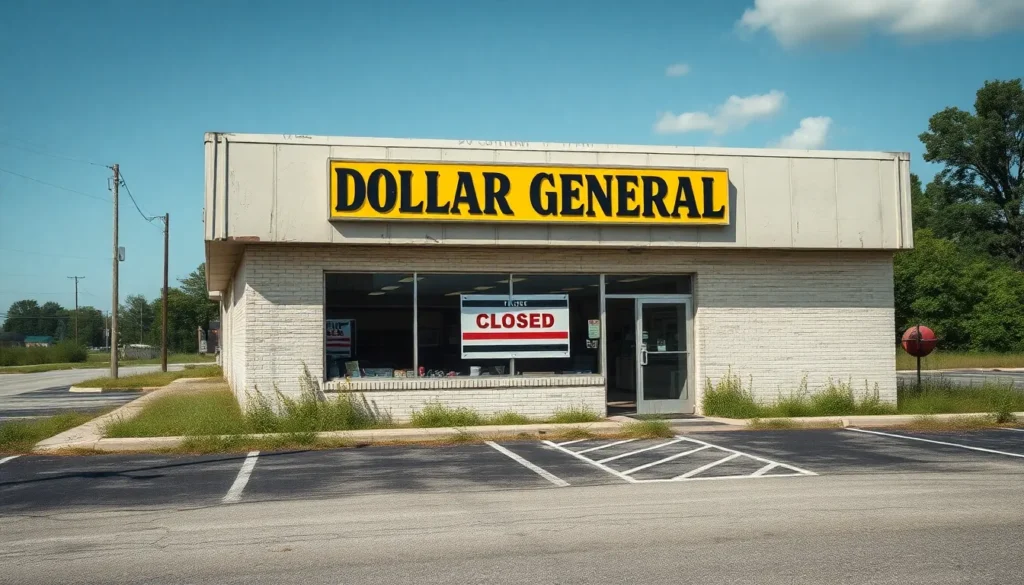Table of Contents
ToggleDollar General stores have become a staple in many communities, offering everything from snacks to household essentials at unbeatable prices. But hold onto your shopping carts—some locations are closing their doors, leaving loyal customers wondering what’s going on. Is it a sign of the times or just a seasonal shuffle?
Overview of Dollar General Closures
Dollar General has announced closures affecting select stores across the United States. These changes impact various locations, raising concerns within local communities. Areas experiencing closures often rely on these stores for affordable snacks and household essentials.
According to recent reports, financial performance influenced some of these decisions. Stores with lower sales figures face increased scrutiny, leading to potential closure announcements. Reports indicate that some closed locations may reflect strategic shifts in the company’s overall business model.
Specific states have seen more closures than others. For instance, areas in the Southeastern region experienced higher rates of closings, impacting customer access to budgeting essentials. Affected customers express frustration over losing convenient shopping options that meet daily needs.
Analysts suggest that while some closures may be permanent, others could be temporary adjustments to optimize store performance. They note that local competition and changes in consumer shopping habits also play roles in determining which stores stay open.
Monitoring trends in closures helps understand the broader implications for community access to affordable goods. Making informed decisions about store locations aligns with Dollar General’s goal to serve customer needs while addressing financial performance. Overall, ongoing adjustments reflect a commitment to remain competitive in the retail landscape.
Reasons Behind Store Closures

The recent Dollar General store closures reflect various underlying factors. These elements help explain the shifts within the company’s operations.
Economic Factors
Economic challenges significantly impact Dollar General stores. Rising costs, including inflation and supply chain disruptions, affect operational expenses. Many locations face reduced sales figures, prompting a reevaluation of profitability. Market saturation in certain regions leads to increased competition, making survival difficult for some stores. Analysts emphasize that financial performance, in combination with local economic conditions, drives the decision to close underperforming locations.
Changes in Consumer Behavior
Shifts in consumer behavior play a crucial role in store closures. Increased online shopping has reduced foot traffic in physical stores. Price sensitivity among customers leads to higher demand for online discount retailers, diverting sales from traditional stores. Additionally, evolving preferences for shopping convenience encourage consumers to seek out alternative platforms. Local demographics and shopping patterns also influence which Dollar General stores remain viable. Adapting to these trends becomes essential for maintaining presence in the market.
Impact on Local Communities
Store closures significantly affect local communities dependent on Dollar General for affordable products. Loyal customers feel the absence of these stores, leading to increased difficulty in accessing essential items.
Job Losses
Job losses accompany these closures, creating immediate challenges for affected employees. Many individuals rely on their positions for financial stability. Reductions in workforce populations lead to fewer job opportunities within those communities. Local economies suffer as previously employed individuals seek new work in often limited job markets. Families face added stress during transitions, especially in rural areas where employment options remain scarce.
Economic Consequences
Economic consequences arise when Dollar General stores close. Communities lose access to low-cost goods, prompting residents to travel farther for essentials. Increased transportation costs place additional burdens on household budgets. Likewise, local businesses may experience decreased foot traffic as shoppers seek alternatives. Sales tax revenue drops, impacting public services and local infrastructure. Long-term effects include diminished community vibrancy and challenges in attracting new businesses, creating a cycle of economic decline.
Future of Dollar General Stores
Dollar General’s future involves strategic decisions regarding store operations and community engagement. The retailer faces challenges while navigating closures and maintaining a presence in underserved areas.
Expansion Plans
Expansion plans focus on re-evaluating potential store locations. New sites might target underserved communities where affordable goods remain scarce. These efforts may also include revitalizing existing stores to enhance profitability. The company aims to balance the need to close underperforming stores with the commitment to create new jobs in areas lacking retail options. Innovations in product offerings can attract customers while responding to regional demand trends.
Community Engagement Strategies
Community engagement strategies prioritize building relationships with local residents. Initiatives may include sponsoring local events and offering discounts for community organizations. Enhancing in-store experiences can create a welcoming atmosphere for shoppers. Collaborations with nonprofit organizations can support local causes and strengthen brand loyalty. Dollar General may also conduct surveys to gather feedback, ensuring products and services align with community needs.
The recent closures of Dollar General stores highlight significant challenges faced by retailers in today’s economic landscape. As communities grapple with the loss of these essential shopping options, the impact extends beyond mere convenience. Job losses and decreased access to affordable goods create a ripple effect that strains local economies and alters daily life for many residents.
While Dollar General aims to navigate these changes through strategic adjustments and community engagement, the future remains uncertain. Observing how these developments unfold will be crucial for understanding the long-term implications for both the retailer and the communities they serve. As the retail environment evolves, the balance between profitability and community needs will be vital for ensuring access to affordable essentials in the future.







